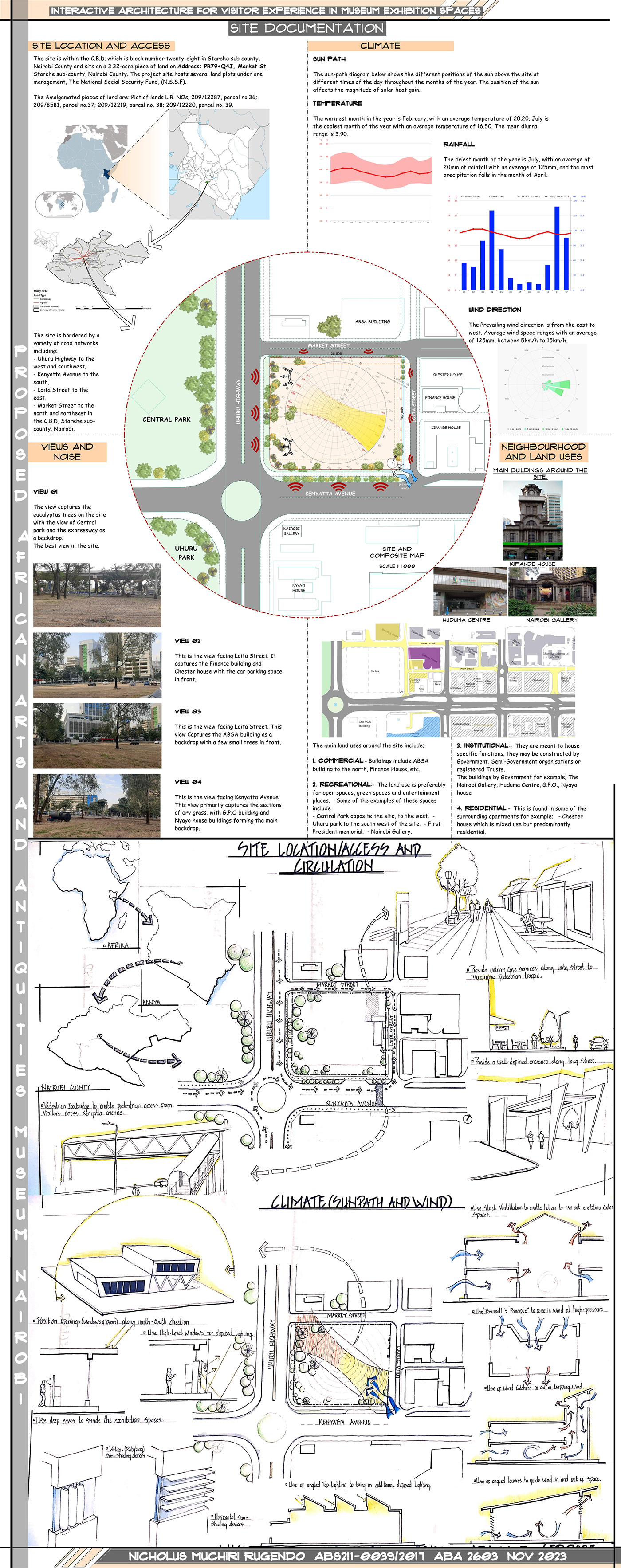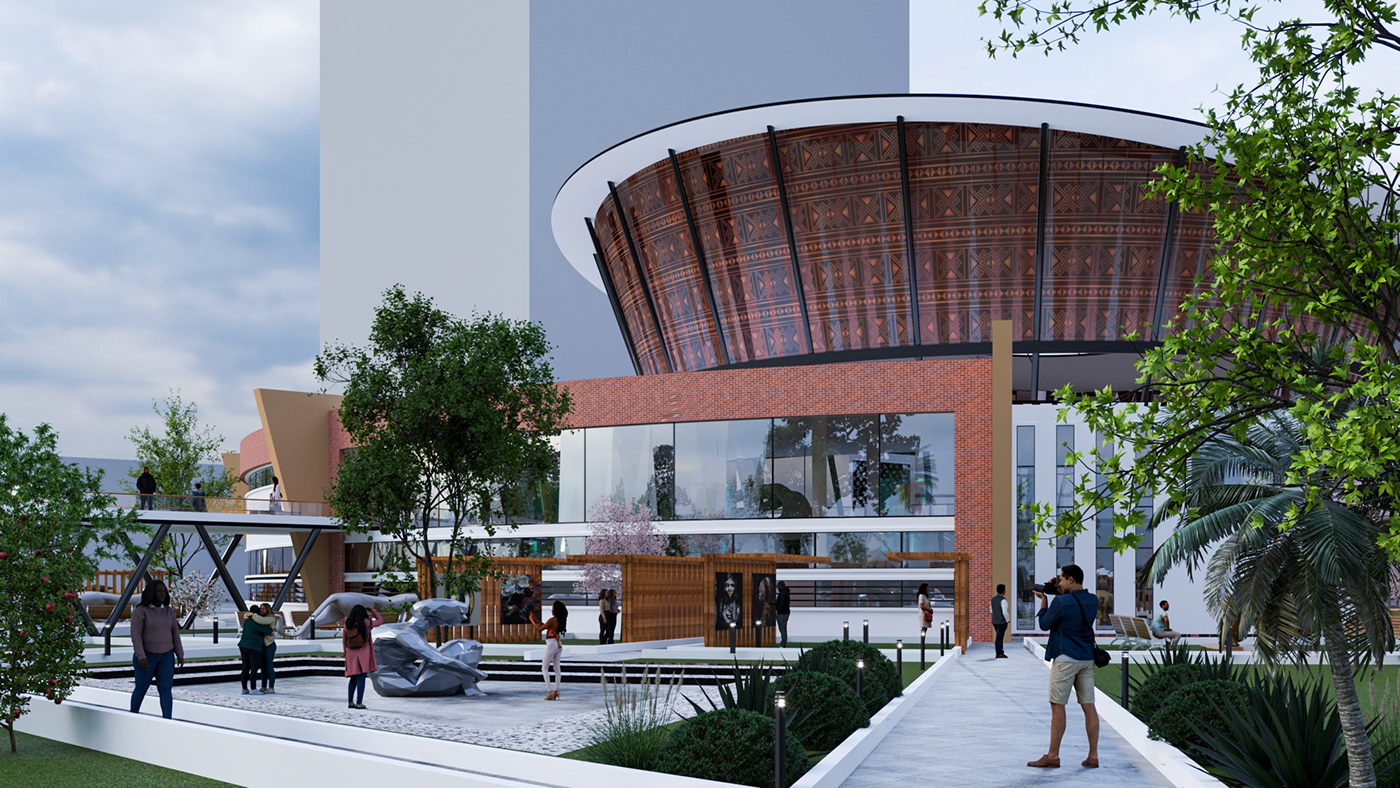THE AFRICAN ARTS AND ANTEQUITIES MUSEUM, NAIROBI.
"The Past, The Present, The Future"
PROJECT SCOPE || ARCHITECTURAL DESIGN
PROJECT TYPE || THESIS PROJECT (MUSEUM)
PROJECT TYPOLOGY || CULTURAL ARTS MUSEUM
PROJECT YEAR || YEAR VI, DECEMBER 2023
PROJECT LOCATION || NAIROBI, KENYA.

INTRODUCTION
“Space will only have a life when people enter it. So the important role architecture can play, and that space plays within that architecture, is to encourage interaction between people, between people and the ideas being presented in the paintings and sculpture, and most importantly between people themselves.”
Tadao Ando.
INTRODUCTION TO PROJECT AND RESEARCH PROBLEM
The functional and social shift of museums from “storehouses” to common spaces for communication, has resulted in the integration of contemporary modes of exhibition in an evolving museum space. This has changed how the museum exhibition space is experienced by the visitors; circulation within the space, lighting, interactions, orientation, etc. The concept of the museum space as something static, frozen in time is slowly changing hence, the need for making them dynamic and interactive.
The problem further lies in the inefficient architectural strategies for incorporating and integrating interactivity within museum exhibition spaces, resulting in diminished visitor engagement, reduced educational impact, and missed opportunities for fostering deeper connections between visitors, artifacts, and information.
Interactivity as a concept has a role to play in enhancing the experience of museum visitors in these museum exhibition spaces. The research also established that the designs of the studied local cases of museums had attempted to integrate interactivity but did not fully satisfy interactivity within these exhibition spaces.

EVOLUTION OF MUSEUM EXHIBITION SPACES \ RELATIONSHIPS
















SITE DOCUMENTATION AND ANALYSIS







CONCEPTUAL DESIGN





PRESENTATION DRAWINGS















INTERIOR EXHIBITION DESIGN IDEAS FOR INDOOR GALLERIES
These represent the various exhibition modes within the museum interiors including the childrens' interactive gallery, the smart\digital exhibitions, the dark exhibition spaces and the projection mapping\Virtual world exhibition spaces, and the physical permanent galleries.
The use of curvilinear indoor galleries allows for the concept of "Reward and Denial" in architectural design which allows for mystery and exploration with one 'BIG' question, "What lies after that bend\ curve?" enabling the museum visitor to keep finding new objects\artefacts as they walk along.




MUSEUM OUTDOOR EXHIBITION DESIGN
These represent the idea that museum exhibitions do not only occur indoors but can happen outdoors to make more interactions between the people, nature, and the artwork. These encourage more interactions between people as opposed to the more intricate indoor galleries. The use of sculpture gardens, sunken galleries and portable exhibitions serve as the main mode of outdoor exhibition within the museum. The use of L.E.D panels for outdoor exhibition and indoor light manipulation enhances the outdoor experience even at night to ensure the museum can run both day and evening\partial night times.
These exhibitions also allow for continously changing exhibitions ensuring interest and evoking exploration among the museum visitors.
IDEAS




OUTDOOR EXHIBITION (SCULPTURE GARDEN)
This outdoor exhibition features the Museum's sculpture garden and the outdoor exhibition pods in Timber framed panels. The use of timber and brick veneer cladding for the facades borrows from locally available materials and uses African earth colours/tones for the exteriors. It also merges the exteriors with the existing urban context.
The use of roof canvas with African prints aids with the exhibition of African fabric within the museum with constantly changing African prints.

To be continued...
THANK YOU!!




